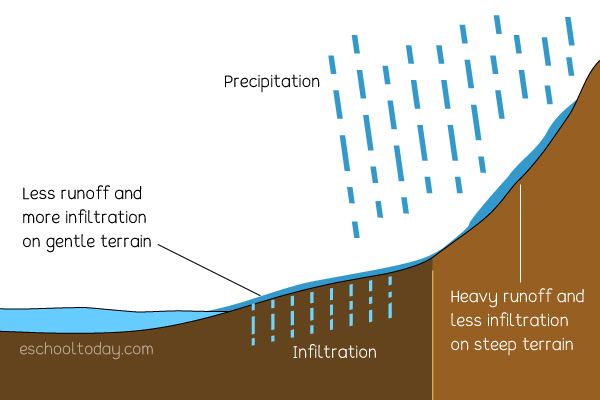- The Water Cycle
What is the Water Cycle?
Runoff is precipitation that did not get (infiltrated) absorbed into the soil or did not evaporate, and therefore, made its way from the ground surface into places that water collect. Runoff causes erosion and also carry chemicals and substances on the ground surface along to the rivers where the water ends up. It can cause water pollution too.
Only about 35% of precipitation ends up in the sea or ocean. The other 65% is absorbed into the soil. Some of it evaporates too.

The amount of runoff that can happen depends on:
The topography of the land (slopes, hills, and valleys):
If it rains in areas with lots of hills and valleys, the water tends to have little time to be absorbed into the soil. It quickly runs down the slopes and into valleys and ends up in the flowing streams. If an area is plain and level, the water has nowhere to flow to and tends to have more time to be absorbed into the soil, and also gets evaporated.
Nature (make-up) of the soil or ground:
Areas with soft, porous soils absorb more water than areas with rocky non-porous surfaces.
Amount of precipitation:
Sometimes, precipitation occurs in mild showers over long periods. When that happens, the ground is not saturated, and the water is absorbed into the soil. Some of it will evaporate too. In other instances, there could be heavy rain or snow-melts, and the water is so much that it floods the area, and water will find its level.
